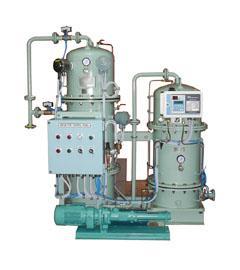How Does an Oily Water Separator Operate? An oily water separator, commonly known as OWS is a critical equipment of the shipping or marine industry. As the name says, an oily water separator is used to separate oil and water mixtures into their separate components. An oily water separator is commonly found on board ships where it is used to separate oil from oily wastewater before it is finally discharged into the ocean. A ship produces a mixture of oil and water on a daily basis which needs to be separated from each other before it is discharged into the ocean. Hence, there comes the need for an oily water separator that can separate the mixtures. It is important to separate the mixtures because some of the contaminants including fuel oil, rust, sewage, lubricating oil, etc. can prove harmful to the ocean environment. take look How Does an Oily Water Separator Operate? An oily water separator can be operated when the ship is sailing. This is because the oil content must be less than 15 ppm and the ship has to be in operation. In case there is a failure, the shop should be stopped. Unable to do so, the chief or 2nd engineer can be imprisoned or the ship can be fined. This is the reason why an oily water separator should be operated with utmost precision in order to minimize the risks of marine pollution. To help you understand the working of an oily water separator, go for the reasons mentioned below:
- The value of the OWS should be kept locked and with the chief engineer who will be responsible for opening the lock and overboard valve.
- The desired bilge tank should be opened gently from where oily water mixture is to be discharged from OWS. If the control valves are air operated, open air.
- The filter unit should be filled with fresh or sea water to clean up and prime the system till the water comes out from a vent of second stage.
- The OCM should be observed for PPM value and the sounding of bilge tank should be checked from where OWS is taking suction.
- After the operation, the power should be switched off and the keys are to be handed over to the chief engineer again.
